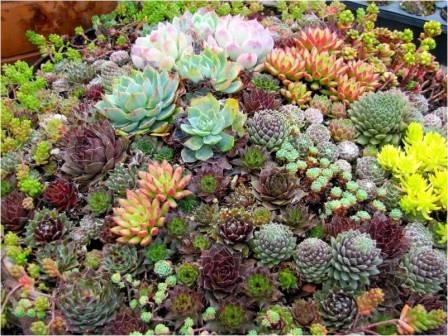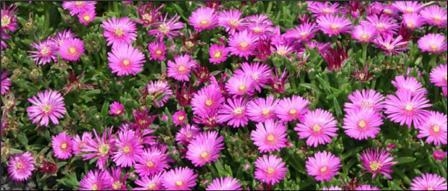Succulents Suck You In
Succulents, ahhh succulents … the subject of my final presentation for my Master Gardener certification. It seemed like such a simple straight-forward topic. But once my ‘presentation partner’ and I started delving into details, it became quite clear that it is a very HUGE and broad topic! So then our task became, “how do we narrow this down to focus on something informative and interesting?”
So after much research, including nearly every book about the broad subject of succulents (or at least it felt that way!), we decided to provide an overview of the 3 types and then show examples of each type – focusing on one in particular, the seemingly ‘most popular’ or certainly prevalent in this area, the stonecrop family.
I will begin by quoting from a document provided by the Ruth Bancroft Garden in Walnut Creek:
Succulents. Almost everyone is familiar with the term. Yet questions such as “is that Aloe a member of the succulent family?” reveal basic misconceptions on the part of many people as to just what a succulent is. The core of the problem here is that the term “succulent” is merely a descriptive term and not a scientific classification. Thus any plant that has evolved swollen water-storing tissues as a protection against desiccation is succulent by definition, regardless of what family it belongs to. A few families, such as the Crassulaceae (the stonecrop family, which includes plants such as the Hen-and-Chicks and jade trees) are composed entirely of succulents. But in many other cases, succulence occurs only in certain groups of a family of largely non-succulent plants.
The three types of succulents are leaf, stem and root, and as you might surmise from above (or perhaps already know), the plants store water in each of these areas, and in some cases two areas. An example of this is the jade tree, which is both a leaf succulent and a root succulent. And as you can see in the picture above, succulents come in all shapes and colors, which can add a lot of beauty to your garden or landscape.
I think one of the biggest lessons that we learned in researching this topic is that succulents are extremely forgiving and are therefore a great choice for any gardener … beginning gardeners will love the ease of planting them (break off a piece from your neighbor’s beautiful plant — with their permission of course! — and just put that right into the ground), and seasoned gardeners will appreciate their beauty and variety. Plus in these times of water-wise landscaping everyone will appreciate the fact they don’t require a lot of water very often. So, whether around your property or in pots, my research shows that succulents are nearly a perfect planting option!
Oh, but a word of caution, don’t be fooled by these beauties below as I almost was …. the invasive Ice Plant of the Aizoaceae Family. This plant offers a variety of beautiful flowers, tolerates blazing sun and spreads quickly, but the latter is exactly why you should avoid it! It will take over your entire yard, so buyers beware!

Variety of succulents. (photo from Recycle Reuse Renew Mother Earth Projects)

Invasive, indestructable ice plant. (photo by JoEllen Myslik)

